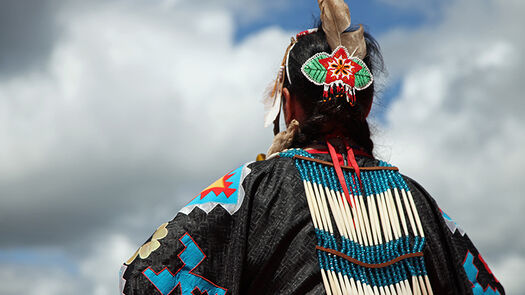November 20, 2025
November 20, 2025
Expanding Federal Action for Urban Indian Health and Overdose Prevention

American Indian and Alaska Native communities face the highest overdose death rates in the United States. Recent CDC provisional data show that American Indian and Alaska Native people experienced 67.9 overdose deaths per 100,000 in 2022, which is more than double the national rate. These disparities persist in both rural and urban settings and reflect long standing inequities in access to care, chronic underfunding of the Indian Health Service and the effects of historical and ongoing trauma. More than 70 percent of American Indian and Alaska Native people now live in urban areas, yet urban Indian organizations receive only one percent of the Indian Health Service budget. This mismatch places major pressure on organizations that families rely on for behavioral health, primary care, prevention and culturally grounded support.
In collaboration with the Overdose Prevention Initiative, the National Council of Urban Indian Health (NCUIH) recently convened a virtual congressional briefing to outline the current landscape of substance use disorder in American Indian and Alaska Native communities, highlight interventions that are working on the ground and describe areas where federal policy can strengthen the response. NCUIH elevated the evidence and experiences of urban Indian health programs and highlighted a consistent theme: stable and predictable funding allows programs to reach more people and respond effectively during periods of heightened risk.
"American Indian and Alaska Native people experience the highest overdose rates in the country and the resources to respond remain limited," said NCUIH Associate Director of Policy Jeremy Grabiner. He noted that life expectancy among American Indian and Alaska Native people has fallen to levels lower than those of the general U.S. population in 1950. Substance use disorder rates remain nearly twice the national average. Grabiner emphasized that urban Indian organizations have become essential providers because they deliver behavioral health, harm reduction, primary care and traditional healing in settings that reflect community experience. "Urban Indian organizations were created to fill gaps in access," he said. "Today they carry a disproportionate share of responsibility without the funding to match it."
NCUIH recently developed a new resource titled, "Substance Use Disorder and Overdose in American Indian and Alaska Native Communities," which highlights key data, barriers to care and recommended policy solutions to address the disproportionate impact of substance use disorder (SUD) and overdose among American Indian and Alaska Native (AI/AN) people.
The briefing also centered community experience from Native American Lifelines, which provides services in Baltimore and Boston. "Everything we do is rooted in culture," said Executive Director Kerry Hawk Lessard. "Our community told us clearly that disconnection from culture, feeling invisible in majority non-Native cities and the stress of horizontal bullying or hostility all drive distress and substance use. If our programs do not reflect Native identity, people will not come."
Native American Lifelines integrates cultural practice with evidence-based overdose prevention. Talking circles, sweat lodges, art therapy and drum making serve as entry points for harm reduction education and naloxone distribution. "People may not show up for a training on Narcan, but they will show up for culture," she said. Lessard highlighted the "Keeping the Heartbeat Strong" project, which brought community members together to make hand drums while learning how to recognize and reverse opioid overdose. "The drum represents the heartbeat of the earth," she said. "We wanted our relatives to see Narcan as medicine that protects that heartbeat."
Lessard also described the impact of unstable funding. During the 2019 federal shutdown, Native American Lifelines lost twelve community members to fatal overdose. "I grew up with every one of them," she said. "When programs lose funding, we do not just lose services. We lose culture bearers, language holders and relatives who keep our communities strong." She noted that advanced appropriations for the Indian Health Service helped prevent service disruptions during the current shutdown. "It made the difference between staying open and cutting services during a high-risk period," she said.
NCUIH outlined several federal programs that support prevention and treatment efforts. These include the Native Connections Grant, which provides suicide prevention and substance use services for Native youth and has House and Senate proposals for continued funding. Tribal Opioid Response Grants remain a key resource for treatment and prevention across Native communities. NCUIH also noted the Behavioral Health and Substance Use Disorder Resource for Native Americans Program, authorized in 2023 but not yet appropriated, and the need to increase the urban Indian health line item to support growing demand in urban settings.
Utilizing a grant from the Global Health Advocacy Incubator , NCUIH developed and released an advocacy toolkit for urban Indian organizations designed to support effective communication with policymakers. The toolkit includes guidance on meeting preparation, message development and strategies to maintain long-term relationships with congressional offices.
The message is clear: culturally grounded programs within urban Indian organizations reduce overdose risk, strengthen community connection and support long term health. Federal investment shapes whether these programs can sustain the work that communities rely on. The need remains to sustain financial support for tribal and rural programs, with a level of flexibility to be able to funnel and utilize dollars where they are most impactful.
As overdose trends shift across the country, policymakers have an opportunity to strengthen health systems that serve American Indian and Alaska Natives. These decisions will influence whether organizations have the resources needed to protect health and preserve cultural continuity for future generations.
Access NCUIH Advocacy Toolkit: https://ncuih.org/wp-content/uploads/Invite-MOC-TK-NCUIH-D617_F-Web.pdf
Access NCUIH Resource: Substance Use Disorder and Overdose in American Indian and Alaska Native Communities



